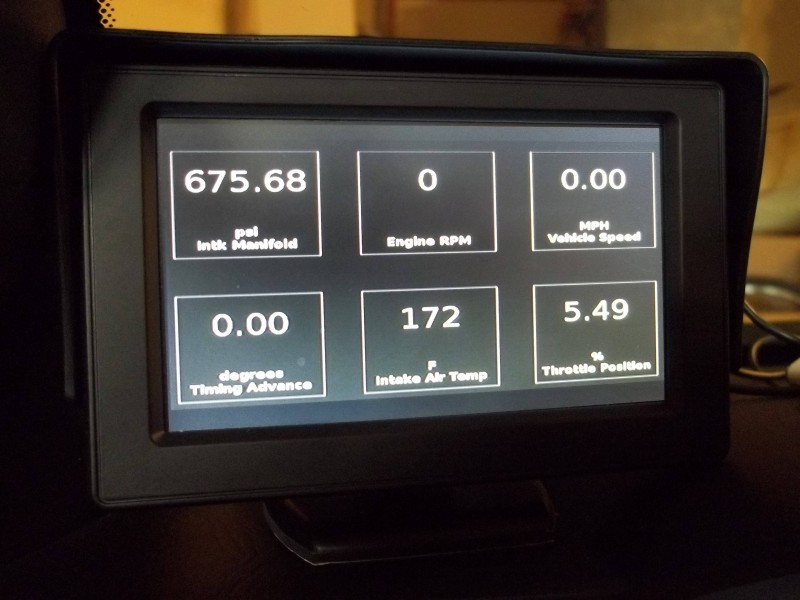A few weeks ago, [sentdex] described how Python has changed his life. In particular, it has allowed him to mine Bitcoin automatically, teach other people programming, and realize a full in-car computer for less than $100 using a Raspberry Pi.
It’s based on a model B, which he’s enclosed in a beefy Pi camera case that sits on the dash of his Honda S2000. The screen is a $17 internet special with composite in, which keeps the BOM way down. A 3A switch wired into the ignition ensures that power to the Pi is not rudely interrupted.
A script takes the Pi directly into desktop mode when [sentdex] starts the car. His main goals for the project were setting up a dash cam and communicating with the OBD computer. The Pi pulls various data points including the throttle position, and the user moves through the list with the arrow keys of one of those roll-up keyboards.
In the future, he’d like to upgrade it to live graph the throttle position and add a sensor to show the brake position. Be sure to check out the walk-through/demonstration video after the break.















Woohoo! Texas!
Dashberry Pi
It’s either Honda S2K or S2000, not SK2000… I’m a car guy, so I’ve got to point things like that out, haha.
D’oh! Fixed. Thank you!
I’m trying to build one of these myself, but he cheated and plugged into the OBD-II port to get all the data. I’ve got an ODB-I Honda and I have to grab all the signals myself and step them down from 12 volts to 5 volts though individual components. Still working on mine…
I’m in the same boat. My Peugeot uses VAN bus (not CAN bus like OBD2), so I’ll be patching in to each sensor individually. Almost all sensors are 0-5v analog readings, so you’ll just need an Arduino or ADC board to read them on an R-Pi. If I had a Honda I’d just buy a Hondata and have direct access to all the sensors and be able to tune it too (such as for adding a turbo or converting to E-85 fuel).
Why is he going into X? Python and pygame can run without X doing full GUI like he is creating. so much overhead is added by running X for no reason at all.
Someone did the something similar on his WRX with an Arduino:
http://www.clubwrx.net/forums/tutorials-diy/134423369-clock-pod-mod-subarb-select-monitor-ecu-polling-arduino.html
OBD bluetooth costs 5$. an android phone or tablet with bluetooth costs less than 50$. there’s loads of apps to do loads of things. does a lot more and all you have is to plug and play.
And using that solution would be a hack how?
You can use it as your dash cam too. Use a software like Automate It to automatically boot the required software when the ignition is on (and thus the charger turns on).
How do you “store 3 amps”? What is this “3A” thing he’s got? A capacitor? How long does it last? 3 amps x 1 second = 3 Farads, at some dV/dt.
here there be magic. duh.
The 3A switch is wired to constant battery voltage as well as an ignition “on” signal voltage. When it loses the ignition on (ie when the key is turned off), a signal is sent to the raspi to shutdown, while still being powered by the constant battery voltage. Its been a while since I’ve read about it, but this is the gist of it.